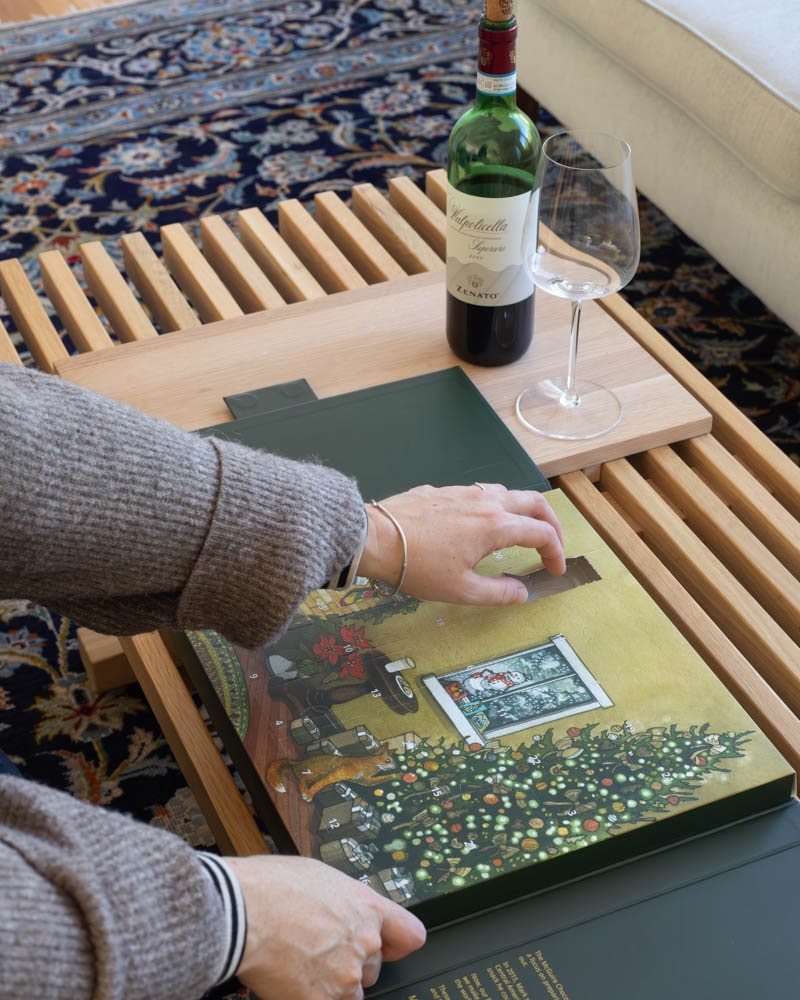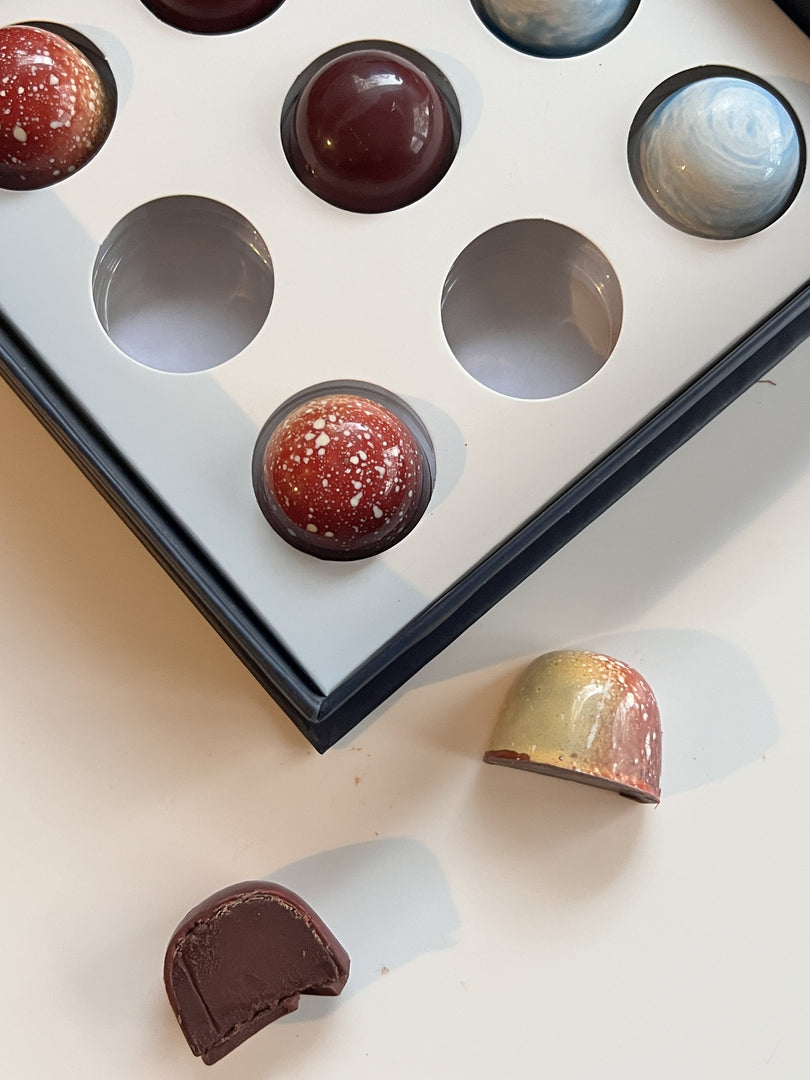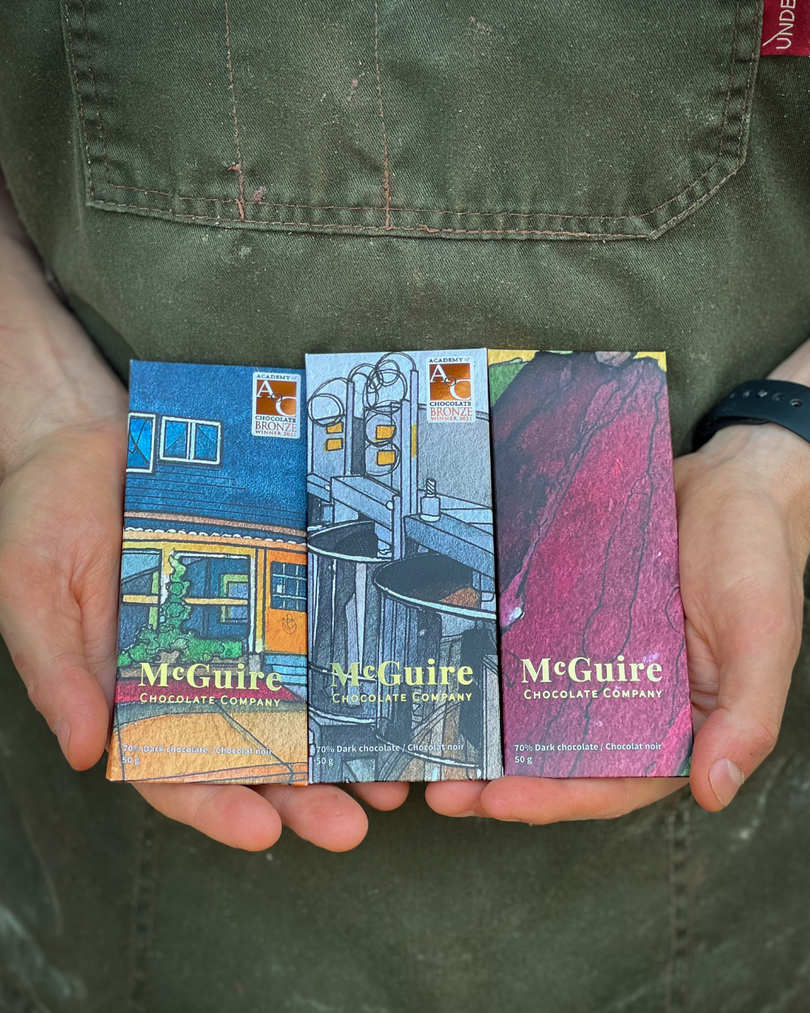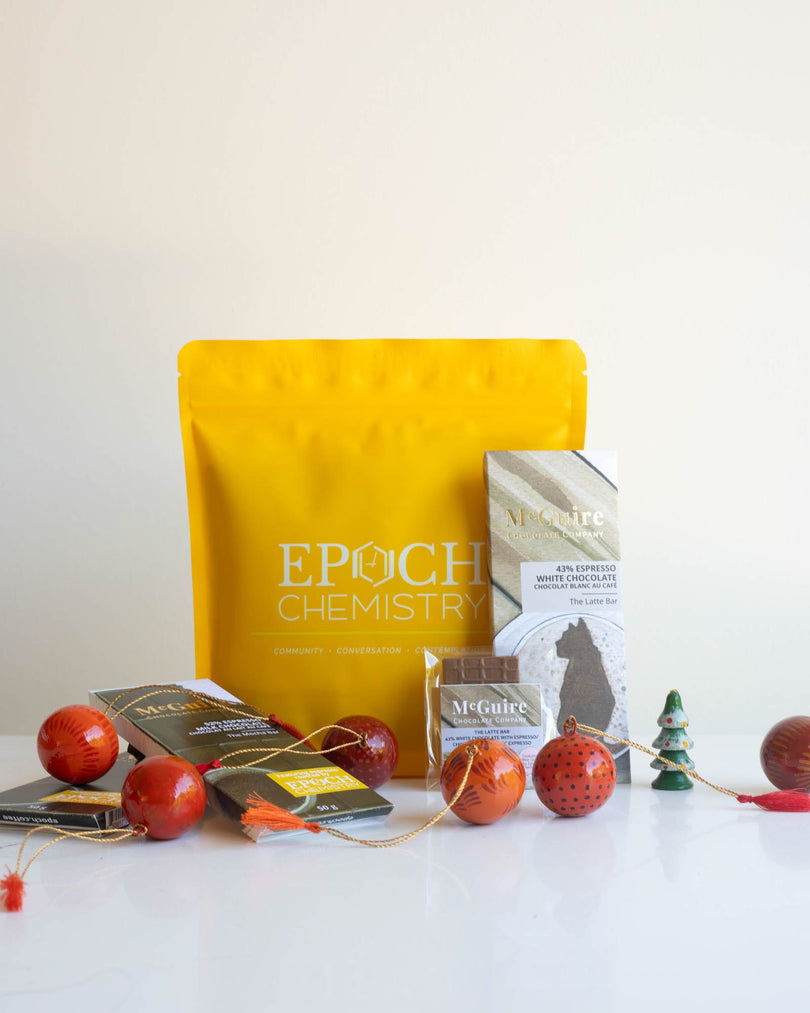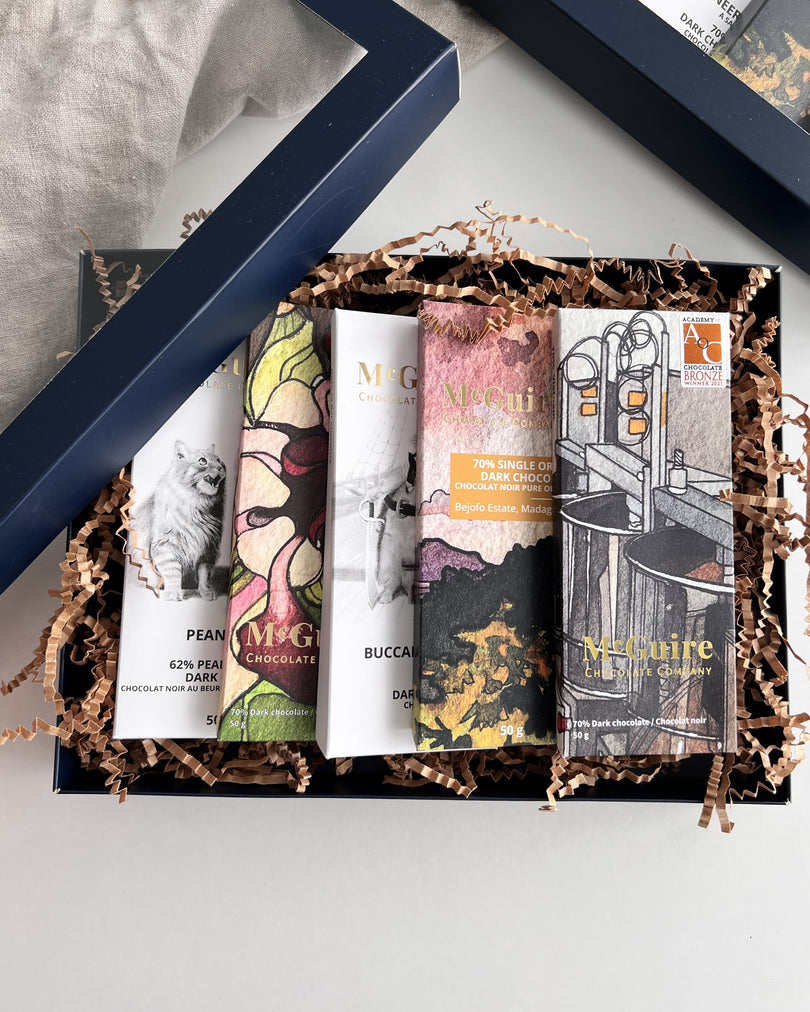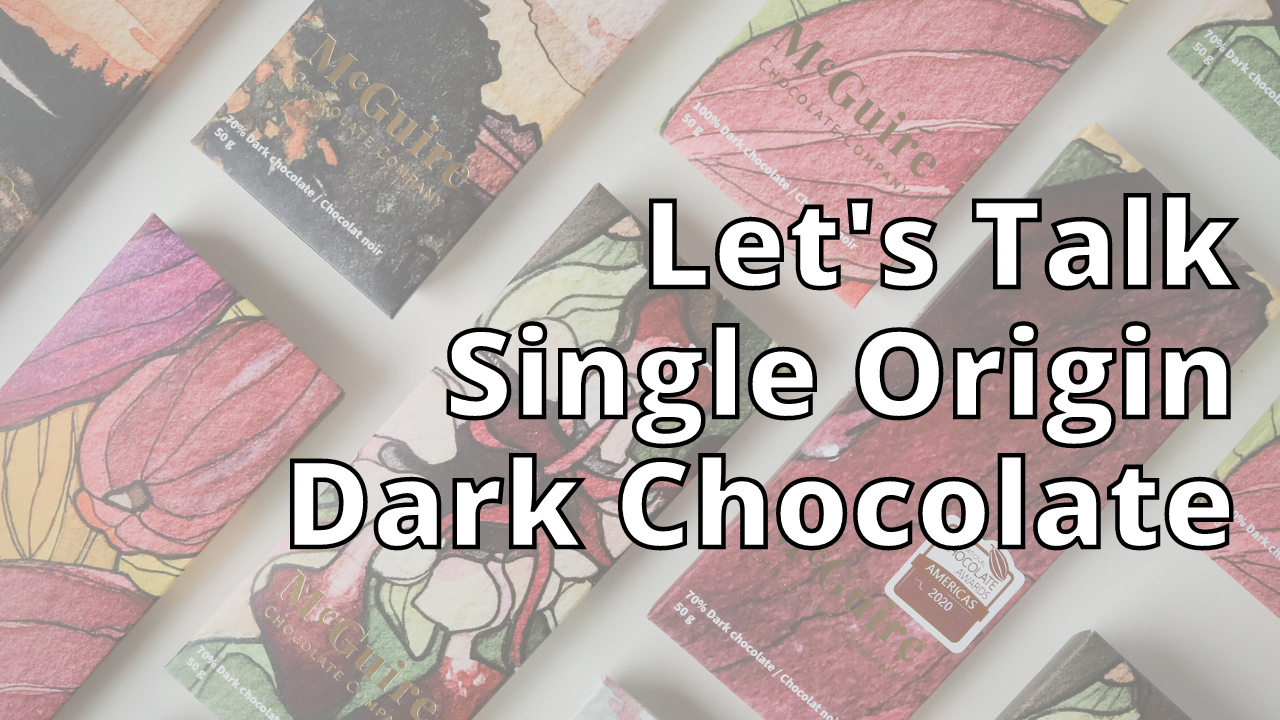There are many factors that influence the flavours present in a Single Origin chocolate bar; from where the cacao was grown and how it was fermented, to how we roast and grind them with cane sugar to transform into chocolate.
The four primary flavour influencers for chocolate are:
1) The genetics of the cacao. Just like different types of grapes yield specific wines! There are 27 known natural genomes of cacao and hundreds of cross-breeds. Since research into this subject is relatively new, it is most common to look at regions instead. Except for South America, everywhere that cacao exists it was planted by humans, so flavour traits tend to map to regions as genetic diversity is limited to introduction points.
2) The fermentation of the cacao is the most influential flavour determinate. It is the seed of the fruit which is ground into chocolate, but the flavour of the sweet tropical pulp of the fruit goes into the seed if they are fermented together immediately after harvest. A controlled fermentation is wildly challenging because of the specialized infrastructure and knowledge required in the remote areas that cacao plants thrive in.
3) We roast the dried seeds (known as cacao beans because they look like kidney beans). A light roast profile preserves delegate fruity and floral notes, while a darker roast creates caramelized and heavier cocoa tones.
4) To grind the cacao smooth takes up to a week of continual circulation under heavy granite stones. The exposure to air throughout the process harmonizes the taste of the finished chocolate. In the early stages of the grind, flavours from the natural seed, fermentation, and roast are all individually present but come together to form a coherent array of notes unique to each batch of chocolate bars.
These chocolate bars can range in flavour profiles from fruity to floral to nutty to just plan chocolatey without any additional ingredients.
Yes, a chocolate bar can taste like raspberries without having any raspberries in it!
